Thriving for the Future: Forestry Commission Strategy 2023-28
Published 12 October 2023
Applies to England
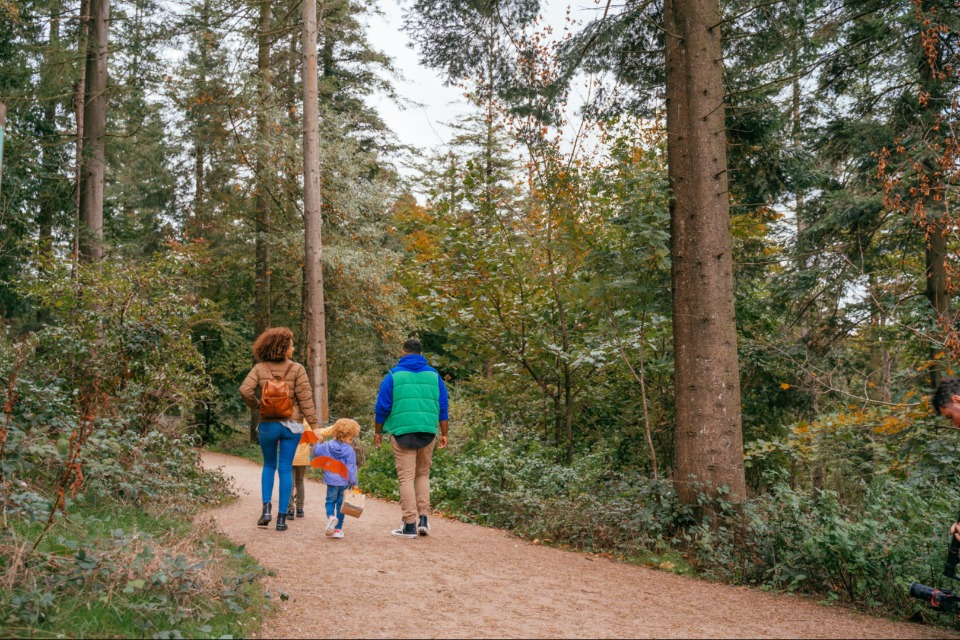
1. Foreword
1.1 Seizing the moment to shape the future
Trees are a gift to our planet and its people, and are a solution to many of the problems that we face. For over 100 years, the Forestry Commission has been a custodian of the nation’s woodlands and forests, growing this natural inheritance and safeguarding its benefits for future generations.
We were founded with a sense of urgency: to reverse centuries of deforestation with limited capacity to meet our own demand for timber. By seizing the moment in 1919, we led a national mission that has doubled the forested area in England in a century. We are however still amongst the least forested countries in Europe.
We now need to redouble our collective efforts, spurred on by further imperatives - to fight climate change and improve nature. Together, we must make forestry work to enhance biodiversity, capture and store carbon, address timber security and produce benefits for people and communities.
If we are to tackle the most pressing societal and environmental challenges of our age, the message is simple: we need more trees.
Thriving trees, woods and forests require a thriving forestry sector where the economics of owning and managing woodland are able to amplify public sector investment. Historically, government and the sector have been able to rely upon the Forestry Commission to ensure a clear and cohesive voice on forestry; we want to maintain and enhance that trust in us. To do that, we must be outward-looking, inclusive and collaborative, recognising that modern forestry can contribute to, and learn from, many other disciplines and sectors with which we need to work.
In Thriving for the Future we have set out our long-term vision and goals. The Forestry Commission was set up at arm’s length from government to be able to plan and act; being mindful of how long it takes trees to grow. The strategy makes clear how we intend to focus our actions with urgency for the next five years, to put us on track to be thriving for the next fifty years and beyond.
We can’t do this alone. Together, we must seize the moment to secure the future of our trees, our sector and our country.
Sir William Worsley, Chair, Forestry Commission
Richard Stanford, CEO, Forestry Commission
2. We are the Forestry Commission
2.1 We are government’s forestry and woodland experts
We collaborate across sectors to inform, demonstrate and enable what works to deliver multiple benefits from thriving trees, woods and forests.
We do this by:
- generating, sharing and applying world-leading science and evidence
- demonstrating the best of modern forestry and land management as custodians of the nation’s forests
- supplying domestic timber to market and building capacity in the wider forestry sector
- working across agencies to prevent and respond to outbreaks of tree pests and diseases
- enabling others to sustainably manage and expand woodland through advice, grants and regulation
We deliver this work through Forest Services, part of the Forestry Commission, as well as two executive agencies, Forestry England and Forest Research.
2.2 Thriving for the future
Thriving for our future in a nutshell:
- one vision. This is our big, motivating “why” that describes the impact we want to have
- three goals. These describe what needs to happen to bring about the vision
- four focus areas. These set out where we will focus the contribution and efforts of the Forestry Commission over the period of the strategy to drive progress on the goals
Delivering our strategy over the next five years will put us on track for the next fifty years.
3. Our vision

3.1 Helping tackle some of society’s biggest challenges with thriving trees, woods and forests
Trees need to be front-and-centre of responding to today’s biggest challenges. Trees provide a uniquely versatile and proven solution to a range of today’s problems, from reducing carbon in the atmosphere and creating habitats for biodiversity, through to supporting rural economies, providing timber and relieving the burdens on our health services. To ensure that our forests and woodlands can continue to deliver these benefits they must be resilient and thriving, even in the face of increasing threats from tree pests and diseases that are being driven by globalisation and climate change.
Our vision reminds us that we need to act boldly now, while taking a long view. Trees can take many decades to grow to maturity, so delaying decisions - or making the wrong decisions - represents a huge opportunity cost for the nation.
4. Our goals
4.1 Goal one: More trees, more diverse species, growing and thriving

Over the next five years this will mean supporting England to reach and sustain new planting each year as required by the government’s net zero plans.
By 2028 this means 34,000 ha of new tree cover to be on track to the Environment Act target of at least 16.5% tree cover in England by 2050.
We are in a period of unprecedented investment in woodland creation and expansion. The Nature for Climate Fund has resulted in millions of new trees being established, responding to the twin crises of climate change and biodiversity decline. To meet the scale of ambition for our country will require a sustained drive to incorporate more trees of all types into our landscapes - urban and rural - where they can deliver the biggest benefits.
What does success look like?
| Key outcome | Headline indicator |
|---|---|
| Expanding tree cover | New planting of woodland and trees in England |
| Increase diverse species | Number of resilient species becoming established |
We will develop with central government, policies where trees, woods and forests are an integral part of land use to deliver the 16.5% tree cover target by 2050. We also want new trees and woodland to help improve connectivity of habitats and ecosystems which have become fragmented. Through our work in Forest Research, and learning from others, new planting should be based on evidence of the choice of species that will be most productive, resilient to climate change and pests and diseases.
4.2 Goal two: Better managed woods and forests that are protected and improving
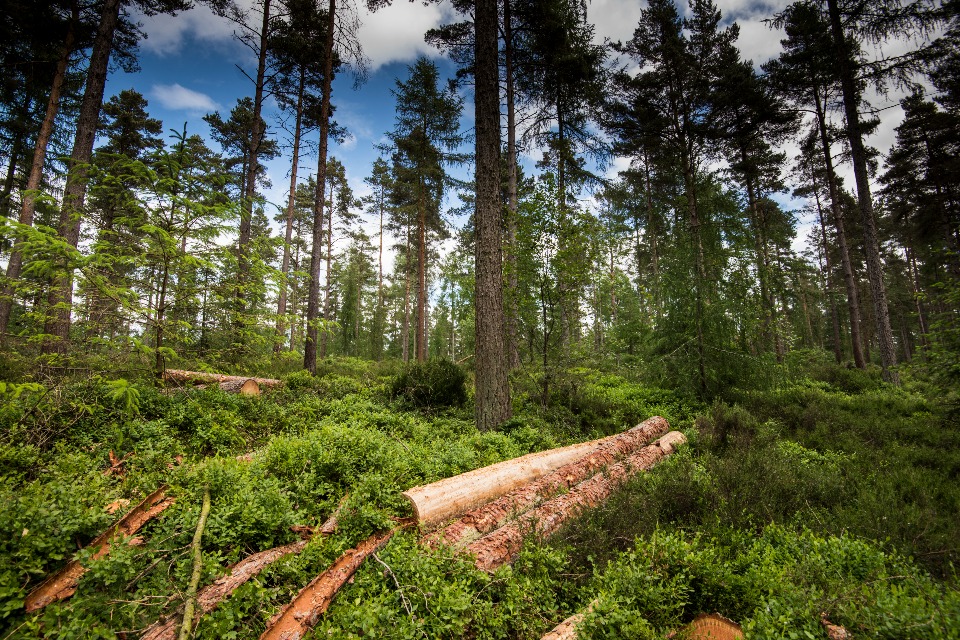
As well as enhancing the plant health biosecurity regime in Great Britain, this will mean mobilising landowners to bring more woods into sustainable management, which is critical to the government’s commitment to protect 30% of land by 2030 while ensuring a sustainable tree resource.
In the UK we have pioneered world-leading, evidence-based standards for what sustainable management of woods and forest looks like and how to put this into practice. We have also developed strong, science-led capabilities to prevent and respond to biosecurity threats to our trees by working collaboratively across government and beyond, whilst investing in skills and capabilities at Forest Research. We need to build on this foundation and broaden the coalition of people who are helping to protect and improve our trees, woods and forests. At the heart of this goal is the need to bring more of our woodlands into active management and enabling those who manage them to take the right steps to preserve and enhance this natural capital.
What does success look like?
| Key outcome | Headline indicator |
|---|---|
| Sustainably managing more of England’s woods and forests | Proportion of woodland in England sustainably managed |
| Protecting trees from pests, diseases and invasive species | Number of pests and diseases becoming established |
| Preventing illegal felling of trees | Proportion of known tree felling in England carried out with Forestry Commission approval |
We will also want to see that more woodland owners are seeking certification that they are managing to the highest standards of sustainability, as we have for all of the 1,500 woodlands and forests managed by Forestry England.
4.3 Goal three: Bigger benefits for nature, climate, people and the economy

This will mean further developing the natural capital approach to drive public and private investment in our trees, woods and forests so that we can maximise the benefits they provide. We will connect this into policy agendas from construction to public health to international trade.
The Forestry Commission will work in partnership across communities and stakeholder groups to maximise the public and economic benefits that flow from our nation’s woods, forests and trees. We will support improvements to the nation’s mental health by creating more green spaces within a 15-minute walk and further our research into the benefits woods, forests and trees have for us.
The benefits for climate, nature, people and the economy are far more diverse and complex than a single set of indicators can reflect. Therefore we will continue to build the broader evidence base about how trees, woods and forests deliver benefits, for example, demonstrating their role in flood alleviation and improving the quality of water, soil and air.
We will play an active role in partnerships, exploring better ways of measuring natural capital and the multiple benefits of trees, woods and forests.
We will also commit to improving the condition of our Sites of Special Scientific Interest (SSSI) and support the Government’s 30x30 pledge to protect at least 30% of the planet’s lands and water by 2030. By supporting the planting of more trees and more diverse species, we will assist in growing the forestry sector and timber resource whilst also improving biodiversity, sequestering carbon, moderating temperatures, reducing pollution and decreasing flood risk. The return on this investment will be felt by future generations.
What does success look like?
| Key outcome | Headline indicator |
|---|---|
| Making woods and forests work for tackling the climate crisis | Carbon captured by England’s woodland |
| Enhancing the natural capital of trees, woods and forests for the nation | Natural Capital Value of England’s forests and woodlands |
| Making woods and forests work for nature recovery | Ecological condition of woodland in England |
| Making woods and forests work for people and communities | Percentage of adults in England who visited a forest or woodland |
| Making woods and forests work for the economy | Gross Value Added of forestry sector for the economy in England |
5. Our principles
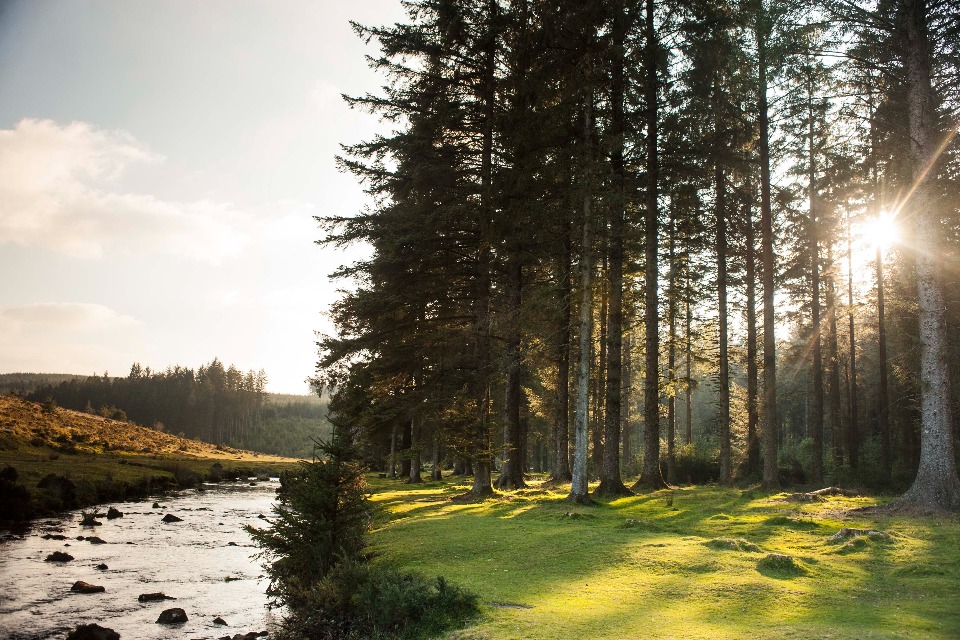
We have developed five guiding principles to underpin how we will work over the next five years.
5.1 Act now for the future
We think and behave as ‘good ancestors’, putting sustainability at the heart of our work so that natural capital grows with each generation.
5.2 Lead with science and evidence
We set the standard for doing ‘what works’, basing our actions on the best science and evidence and sharing it to help others to do the same.
5.3 Partner with purpose
We increase our impact and influence by working with others who share our vision and can complement our expertise in trees and forestry.
5.4 Focus on customers
We listen to and involve the people we serve, shaping what we do and how we do it to have the biggest positive impact.
5.5 Challenge the status quo
We look for and seize opportunities to do things differently, remaining adaptable and constantly learning.
6. Our focus areas
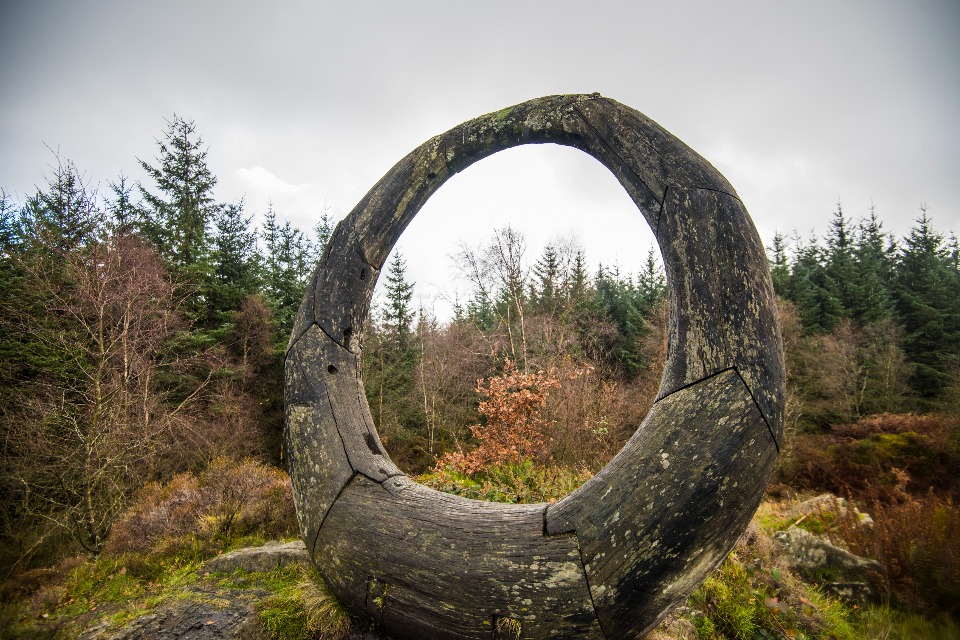
Each part of the Forestry Commission contributes to delivering on our long-term goals and outcomes, which reflect the statutory responsibilities invested in our Commissioners. There are four cross-cutting opportunities where stronger collaboration across the Forestry Commission and with partners from many sectors is required to achieve a step-change in our collective impact on those goals. These focus areas will shape and inform what and how we deliver over the next five years.
We will work together to:
- Grow engagement
- Build resilience
- Unlock opportunities
- Expand horizons
We have set the strategic direction for each area so that it can guide collaboration whilst inspiring creativity and innovation within and beyond the Forestry Commission. From these starting points we will build out programmes of work aimed at enabling a step-change in outcomes, subject to securing the funding and partner support required.
6.1 We will grow engagement

We need to inspire, inform and involve more people, from a wider range of communities, to take an active interest in trees, woods and forests, and feel invested in their future.
Why this matters:
Woods and forests can help us solve the climate crisis, restore biodiversity, create prosperity and enhance wellbeing - but only if more of us take notice and take action. This covers landowners recognising their role in stewarding our natural resources, to local authorities making place-based decisions around green infrastructure; from children and young people being inspired by time spent in nature, to foresters whose practices need to reflect the latest science.
Engagement will enable everything else in our strategy. To do this well, we will need to broaden our existing networks and collaborate with diverse partners to create broad-based support for more and better managed trees, woods and forests.
How we will achieve it:
- connect more people with trees, helping them to deepen their engagement with and contribution to the benefits of woodland
- champion public access to woods and forests, and work with stakeholders to improve the proximity and accessibility of trees and woodlands to more people
- join up with others to maximise the reach and impact of evidence and stories about the wonder of trees, woods and forests
Case study: Feel Good in the Forest
Forestry England’s “Feel Good in the Forest” initiative is a social prescribing project aimed at improving the physical and mental health of individuals in need.
Based in Chopwell Wood and Thames Chase Forest, the programme offers a variety of activities in the forest environment promoting physical activity and providing relief from long-term health conditions.
“Feel Good in the Forest” embraces the principles of social prescribing, recognising the importance of addressing social determinants of health. By linking individuals with non-medical sources of support and activities within their communities, the programme leverages the healing power of the forest environment to enhance participants’ overall wellbeing.
Prescribing activities such as guided walks, yoga, seated exercise and cycling in the forest allows individuals to improve their physical, mental and emotional health. This also allows individuals to connect with nature and foster social connections in a supportive and inclusive environment, with options for varying abilities and preferences.
Participants can self-refer or be referred by support organisations or workers. By incorporating the principles of social prescribing, “Feel Good in the Forest” addresses the multifaceted needs of participants, recognising that factors such as social isolation, lack of physical activity, and limited access to nature can significantly impact health outcomes.
As the programme scales, the impact of social prescribing in the forest environment becomes evident, with participants reporting improved physical fitness, enhanced mental wellbeing, and a sense of belonging and connection to nature.
As “Feel Good in the Forest” continues to grow and expand its activities, it has the potential to make a significant and lasting improvement to the health and wellbeing of individuals through the transformative power of forests.
6.2 We will build resilience
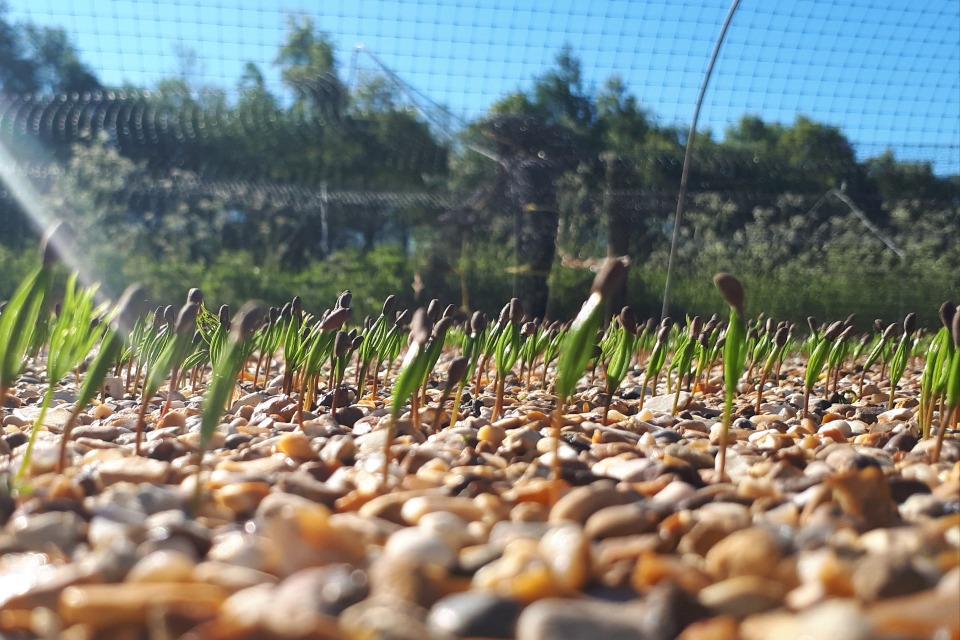
We need to ensure our woods and forests survive and thrive in the face of changing threats, using the best science and evidence to help everyone play their part in prevention, adaptation and protection. Doing nothing is not an option.
Why this matters:
Despite increased action, our trees and woodlands face unprecedented threats from pests, diseases and changes to the climate. Resilience - the ability of trees, woods and forests to adapt to, resist and recover from threats - demands attention to what is planted where, increased diversity of species and management regimes. Without resilient trees and woods the social, environmental and economic benefits of woodland will not be sustained for future generations.
How we will achieve it:
- play a leading role in raising awareness and understanding of woodland resilience
- galvanise and guide action to develop the forests and forestry of the future, building upon updates to the UK Forestry Standard
- work increasingly in partnership, and at the landscape level, to restore and connect ecosystems, including as a partner in Local Nature Recovery Strategies
- continue to strengthen our biosecurity surveillance and response capabilities, taking forward our commitments under the Plant Biosecurity Strategy
Case Study: Forest Research Climate Change Hub
With our rapidly changing climate, it is essential to assess how we manage our forests and woodlands so that they can adapt to associated changes. This requires practitioners to review and make changes to their current management practices, informed by the latest research information and using guidance and tools to encourage adaptation action.
The creation of a multimedia knowledge hub was initiated to help woodland owners and managers overcome some of the known barriers to adaptation. These included: difficulties in understanding technical and scientific information, uncertainty over what are trusted information sources and lack of examples of adaptive practice in action.
Working in partnership with Defra, Scottish Forestry and the Welsh Government, Forest Research has developed a Climate Change Hub that consolidates and distils the latest information and UK Forestry Standard guidance on climate change adaptation. It highlights the changing risks and the possible adaptation measures to reduce these, as well as giving detailed guidance through the decision-making process using a 5-step continuous adaptation framework. Resources include case studies from across the UK, videos, fact sheets, key publications and links to funding and support. In addition, the Hub features information about decision-making tools available to support the management of several climate change risks such as wind and species choice: ForestGALES and Ecological Site Classification (ESC).
The Climate Change Hub will be updated and developed further with information and guidance on the role of woodlands and forestry in climate change mitigation, and it will continue to be shaped by stakeholder groups such as the Forestry and Climate Change Partnership (FCCP) and user feedback.
www.forestresearch.gov.uk/climatechangehub
6.3 We will unlock opportunities
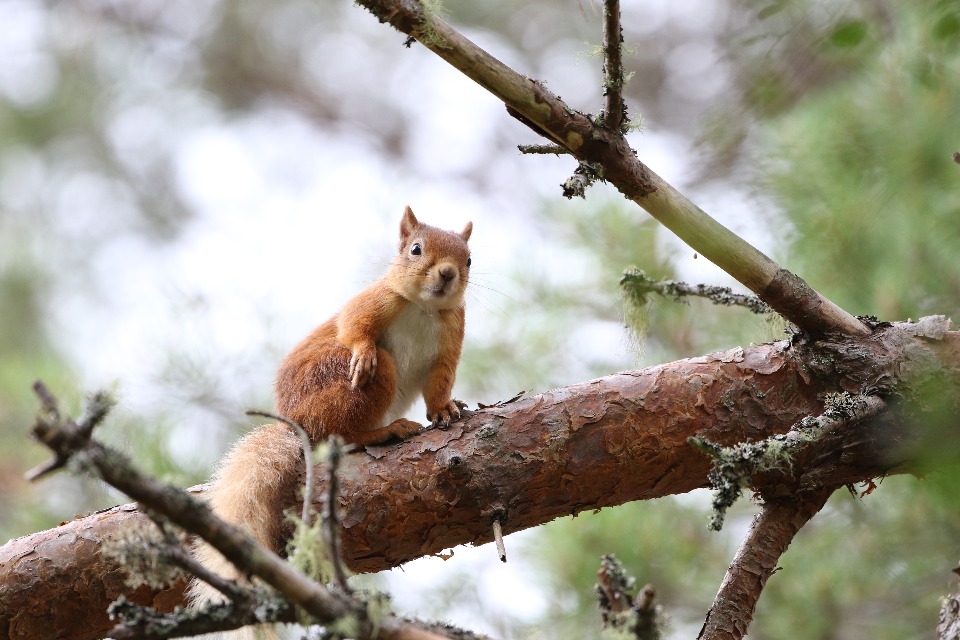
We need to make owning, creating and caring for woodland more attractive, creating the conditions for public and private investment to deliver more, sustainably managed, woodland and stewarding the market for forest products and ecosystem services.
Why this matters:
To meet the scale of action required on expanding and protecting tree cover, the economics of owning and managing woodland need to add up. Continued public funding must be well targeted and complementary to growing ‘green finance’ markets Ð and both need to be clear, trusted and sufficient to incentivise landowners to make long-term investments and permanent land use change in establishing, expanding and managing woodland.
How we will achieve it:
- help to mature private investment into woodlands, including markets in carbon, water and biodiversity
- target support to address barriers to the commercial viability of woods and forests, including routes to market for timber and wood products
- shape the future design and targeting of government funding schemes to support specific outcomes and contexts, e.g. sector innovation, urban treescapes
- pursue a more enabling regulatory and policy environment across government for woodland creation and management
Case Study: North East Community Forest
A Community Forest project offers a wealth of added benefits that make it distinctive compared to other forestry programmes.
This includes the engagement of local people in the design, implementation, and management of new woodlands, supporting wider public access to nature and contributing to setting the scene for greater investment and economic recovery. Community Forests will deliver woodland creation projects that make our landscapes more resilient to climate change, and that improve the quality of life for local people and communities.
One of the 13 Community Forests across England is the North East Community Forest (NECF). This is a multi-million pound, 30-year project, across Newcastle, Gateshead, North and South Tyneside, Sunderland and County Durham. Delivered by 7 local authorities and supported by a range of partners, it aims to plant up to 500 hectares of trees by 2025, with a long-term goal to increase canopy cover across the North East by 30% by 2050.
Funding from the Nature for Climate Fund (through the England Community Forests programme) coupled with the support and expertise provided by the Yorkshire and North East Forestry Commission Area Team were crucial to kickstarting this initiative. Almost 80,000 trees have been planted across the North East to help tackle the climate crisis, wildlife loss and bring people closer to nature. A total of 62.16 hectares of land were covered by the NECF during the 2021/22 planting season - well exceeding the initial target of 25ha. The 79,503 new trees, 16 hectares of open space and 3,215 linear metres of hedgerows will capture 19,282 tonnes of carbon dioxide from the atmosphere.
englandscommunityforests.org.uk/landowners
Lloyd Jones, Forest Manager, North East Community Forest:
The Forestry Commission have been with the local authorities right from the start, standing shoulder to shoulder with us and providing invaluable support and expertise in getting the North East Community Forest off the ground. As we moved into delivery phase they have continued to be highly valued partners, providing technical forestry expertise to the development of woodland creation schemes and undertaking their regulatory functions with appropriate pragmatism.
6.4 We will expand horizons
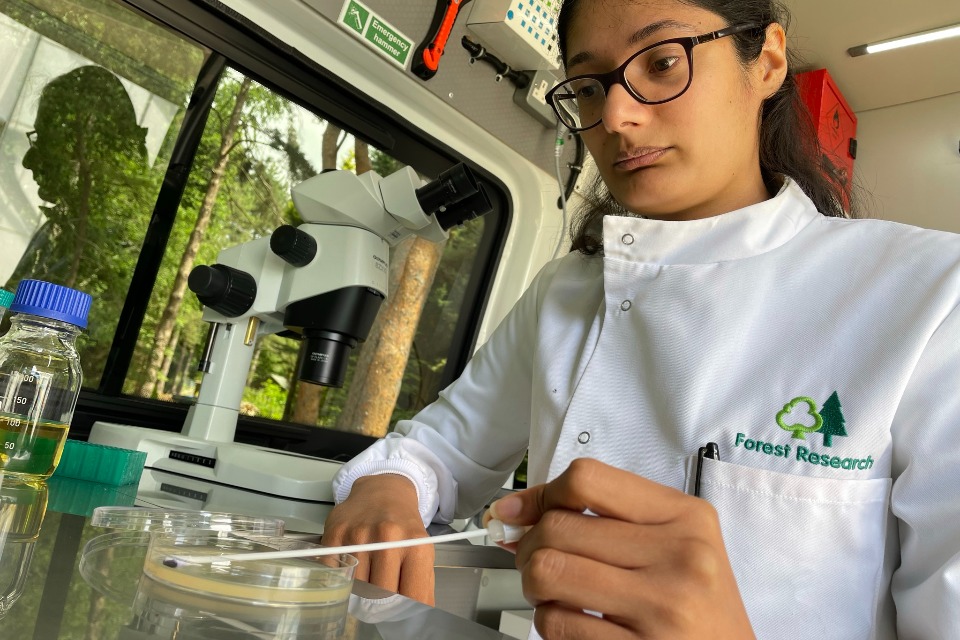
We need to work across sectors to create the future of forestry, bringing together the talent, ideas and learning that builds upon the best and shapes what comes next.
Why this matters:
The world does not stand still and we need to plan for 50 years and beyond, when the trees we plant today reach maturity. We must ensure our trees and woodlands continue to thrive into the future, and scan the horizon for new threats and opportunities. Ambitions for a growing sector require bringing a new generation into our forests to work in a range of diverse and interesting career opportunities. Embracing cutting-edge science and technology and learning from the best across the world will ensure the long history of forestry has a bright future.
How we will achieve it:
- help to make forestry an innovative sector that can take new methods and technologies to scale
- attract and develop the future forestry workforce by showcasing diverse opportunities in our woods and forests and building career paths in the sector
- extend our collaboration across the UK and internationally to bring the best insights and practices together
Case Study: Development Woodland Officer Programme
The Development Woodland Officer (DWO) programme represents a pioneering step in the UK’s forestry sector.
In partnership with the Forestry Commission, the University of Cumbria, and the Institute of Chartered Foresters (ICF), this programme offers 25 apprentices an unprecedented opportunity to receive on-the-job training and pursue Chartered Forester status. The DWO programme provides a degree-level forestry apprenticeship at no cost to the participants.
The DWO programme addresses the pressing skills shortage in the forestry sector, exacerbated by factors like the EU exit and COVID-19. The programme is cultivating a new generation of skilled forestry professionals who can meet the future demands of the industry. The apprentices bring diverse backgrounds and motivations to the programme, united by their passion for sustainable forestry.
The recent cohort of apprentices come from various backgrounds, including teaching, university administration, IT, railway management, and the military. They sought career changes driven by a desire to contribute to the environmental sector and develop fulfilling careers in forestry. The programme provides them with the opportunity to pursue their aspirations and make a positive impact.
The DWO programme offers a comprehensive training curriculum that combines academic studies, practical experience, and sector placements. Apprentices receive rigorous academic instruction in forestry management at the University of Cumbria and gain practical experience working in Forestry Commission teams across England. The programme also provides up to nine months of wider sector placements to further enhance skills and employment prospects.
The programme envisions the future of UK forestry through a combination of sustainable forest management practices, increased diversity in tree species, and the development of small community woodlands. This contributes to boosting the production of UK timber while creating a safer and more inclusive forestry sector. By inspiring others and showcasing the possibilities within the industry, the DWO programme fosters positive change and long-term growth, addresses the skills shortage in the forestry sector, and equips the next generation to tackle the challenges of the future.
7. Building on the past

7.1 A century of leading and learning in sustainable forestry
Our Thriving for the Future strategy builds on over 100 years of experience in leading action to establish, protect and manage woodland. During that time our work alongside others has shown how sustainable forestry can deliver for the economy, for nature, for people – and increasingly, for climate.
7.2 Growing productive forests
When we were founded in 1919 with a focus on restoring forests and securing domestic timber supply after the First World War, only 5% of Great Britain remained forested. Public acquisition and management of forests along with support to landowners to incorporate productive forestry into their land rapidly began to reverse this trajectory.
Within 20 years, the Commission was the largest land manager in the country and has continued to expand the size and value of the nation’s forests, now managed by Forestry England. This public land is the single largest source of England’s domestic timber, helping to underpin capacity and stability in the wider forestry sector, such as sawmills, which are a vital part of rural economies across England.
We encourage more productive, sustainable woods and forests across the sector, supporting our economy and reducing our need for imported timber. There are currently 19,000 people employed in forestry-related jobs in the UK, many in rural areas. The forestry and wood processing sector is valued at £2.2 billion each year.
7.3 Helping nature thrive
As well as helping British forests to become some of the most productive in Europe, the Forestry Commission has led the sector in supporting nature and biodiversity.
We have protected and restored ancient woodland, conserved Sites of Special Scientific Interest (SSSIs) across the nation’s forests and recovered or reintroduced populations of native species such as red squirrels and beavers, and have encouraged others to do the same. Since 2001, the nation’s forests, managed by Forestry England, have been recognised as a World Wildlife Fund ‘International Gift to the Earth’ and we continue to put thriving flora and fauna at the centre of our work.
7.4 Investing in people’s wellbeing
Following early provision for increasing public access to the nation’s forests in the 1960s, the Forestry Commission has grown recreation and wellbeing opportunities in the nation’s forests, from walking and mountain biking, to camping and music festivals.
Forestry England has become the largest provider of outdoor recreation in the country, and is also pioneering the role of woodlands in public health, such as through ‘social prescribing’ with the NHS. Widening public access to woodlands in a range of ownerships remains a focus of the Forestry Commission as a whole, to help as many people as possible to engage with nature.
7.5 Working across Great Britain
Since devolution to new bodies in Wales and Scotland, the Forestry Commission has continued to collaborate across Great Britain.
As well as a strong, joined-up response to biosecurity and tree health, the three nations jointly fund and direct the cutting-edge science and research undertaken by Forest Research that has kept British forestry at the forefront of global standards and practice. As a consequence, Forest Research maintains and invests in state of the art science facilities and works with Forestry England, Forestry and Land Scotland, National Resources Wales and others to provide world-leading applied forest science, expertise and data products that underpin sustainable forest management.
7.6 A new focus on the climate emergency
In the last few decades, the world has woken up to the pressing need to reverse trends on carbon emissions. The Commission’s work now and over the next five years will increasingly reflect how we make choices that drive carbon capture and storage, and build resilience of our trees to a changing climate.
8. Informing and implementing policy

We will work closely with the UK Government and the devolved administrations to align our strategic plans to the policy priorities of the day, as the Government’s forestry experts. While this policy landscape may change over the next five years, we will continue to deliver key commitments set out in the following:
8.1 Environmental Improvement Plan 2023
We will strengthen our partnerships across the Defra Group to play our part in delivering the EIP goals, including legally-binding targets for increasing tree cover in England to at least 16.5% by 2050, and halting biodiversity loss by 2030 and then restoring it by 2042. We also support the international commitment to protect 30% of land for nature by 2030.
8.2 Net Zero Strategy 2021
The Government’s commitment to combat climate change and reach net zero carbon emissions by 2050 requires the UK to accelerate rates of tree establishment to 30,000ha a year.
8.3 Nature for Climate Fund 2021
The Forestry Commission is Defra’s key delivery partner in rolling out a series of funds to support creation and management of woodland as part of £500m funding dedicated to trees, as well as vital support to the forestry sector to increase capacity and innovate. This funding is critical to achieving and sustaining required rates of planting.
8.4 England Trees Action Plan 2021-2024
We deliver or enable many of the commitments in the ETAP on behalf of the Government and continue to use our expertise in forestry to inform policy development by Defra. These programmes and initiatives will be captured in full through our corporate and business planning.
8.5 Tree Health Resilience Strategy 2018
We have put resilience of all kinds at the heart of this strategy, informed by existing commitments. We will provide input and support to Defra in refreshing the strategy and associated plans for tackling specific pests and diseases and building woodland resilience.
8.6 Science and Innovation Strategy for Forestry in Great Britain 2020
The UK Government and the devolved administrations (DAs) in Scotland and Wales coordinate their priorities for investment in new areas of science, evidence and data provision for forestry. We will work with Defra and the DAs to refresh and strengthen alignment of the three nations’ investments in forest science and research.
We also believe that forestry has a much wider contribution to make to public policy and we will continue to work with all parts of Government to connect policies on trees, woods and forests into agendas as diverse as levelling-up rural economies, promoting public health and the future green economy.
9. Working together to make it happen
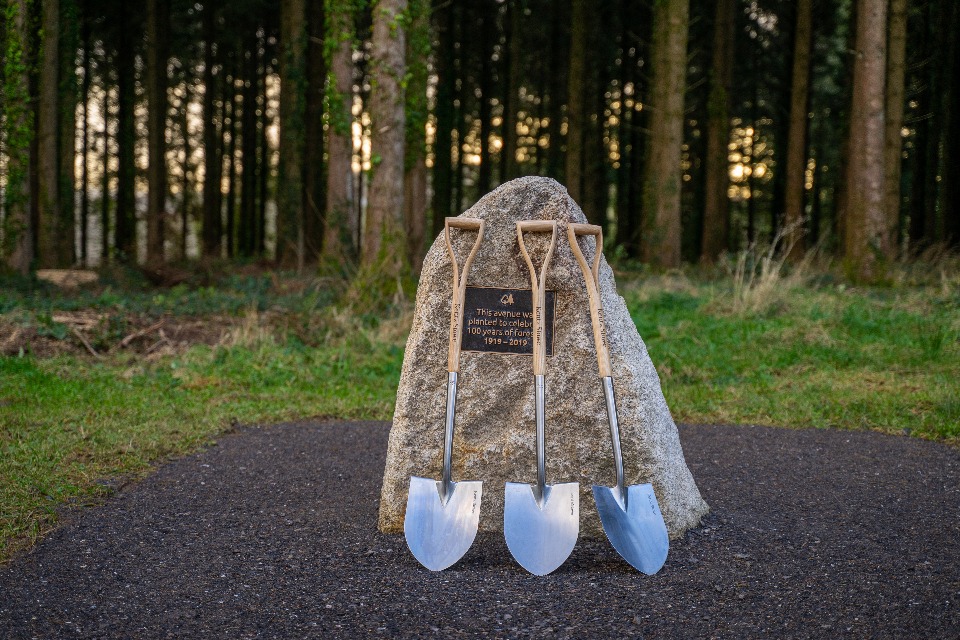
9.1 We are better together
This strategy is a compass to guide our work over the next five years. It covers the work of the Forestry Commission, a Non-Ministerial Department sponsored by the Department for Environment, Food & Rural Affairs (Defra) and overseen by the Forestry Commissioners. Appointed by the Commissioners, the Forestry and Woodlands Advisory Committees provide regional representation and advice to the Forestry Commission from different interest groups. Forest Services, Forestry England, and Forest Research all work with a wide range of stakeholders to deliver Forestry Commission goals.
Forest Services
We are the part of the Forestry Commission that provides expertise and support in order to expand, protect, improve and connect England’s woodlands.
We regulate and incentivise landowners to encourage new tree planting and to help keep private forests, trees and woodlands under sustainable management.
Our plant health team inspects imports and exports of wood, as well as our forests, and we manage outbreaks to minimise the impacts of pests and diseases.
Forestry England
We are England’s largest land manager, caring for the nation’s forests to benefit society.
We are England’s practical multipurpose forestry experts. As well as supplying over one third of the nation’s homegrown timber, we test ground-breaking approaches to adapt to climate change, address the biodiversity crisis and improve people’s health and wellbeing, on a scale like no other.
As a public corporation we draw on diverse income streams to grow the natural capital of our forests.
Forest Research
We provide the evidence base for UK forestry policy, practice and innovation.
We are internationally renowned for the delivery of applied forest science, by providing research, evidence, data and services in support of sustainable forestry.
Our work informs the development and delivery of UK Government and devolved administration policies for sustainable management and protection of trees, woods, forests and natural resources sectors.
Our delivery model includes the Forestry Commissioners delegating statutory responsibilities to Forest Services, Forest Research and Forestry England via their Boards. This recognises the distinct role of the different areas of our business:
- Forest Research has a core work programme that is agreed and funded jointly between Defra, the Scottish Government and the Welsh Government, which is governed by a Memorandum of Understanding
- Forestry England is a public corporation and undertakes commercial activities with the aim of generating surpluses that can be invested in growing the organisation and delivering on its public purpose
The three parts of the Forestry Commission contribute to delivery of Thriving for the Future in different ways which reflect their strengths and remit. We will use Forestry Commission-wide corporate planning to ensure alignment around the strategy and to guide the detailed business planning by Forest Services, Forestry England and Forest Research.
9.2 People really matter
A diverse, skilled and motivated workforce is the foundation of Thriving for the Future.
We will build upon our People Strategy commitment to creating a positive culture where all may thrive and be themselves. Our people care deeply about the purpose of the Forestry Commission and they want to be empowered to do meaningful work that is rewarding and for which their contribution is recognised.
This requires inspiring and inclusive leadership, a safe and happy workplace, developing people so they can progress their careers and making this a modern, flexible place to work.
In particular, we will continue working to attract and retain a diverse workforce, reducing barriers to entry into the sector.
We will also continue to support and leverage our staff networks to make the Forestry Commission an organisation where everyone is valued and welcome, regardless of their background.
9.3 We can’t do this alone
Complex challenges need inclusive solutions. We will be purposeful about who we partner with and how, seeking to build strategic alliances with people and organisations who share our vision.
This will include:
- joining up how we deliver with Natural England, the Environment Agency, the Rural Payments Agency and others in the Defra Group where this can better serve shared customers such as landowners
- strengthening ties across the UK and globally that support mutual learning and coordinated action in the interests of the forestry sector and our shared goals
- fostering new and creative alliances to help us reach new people, communities and markets

